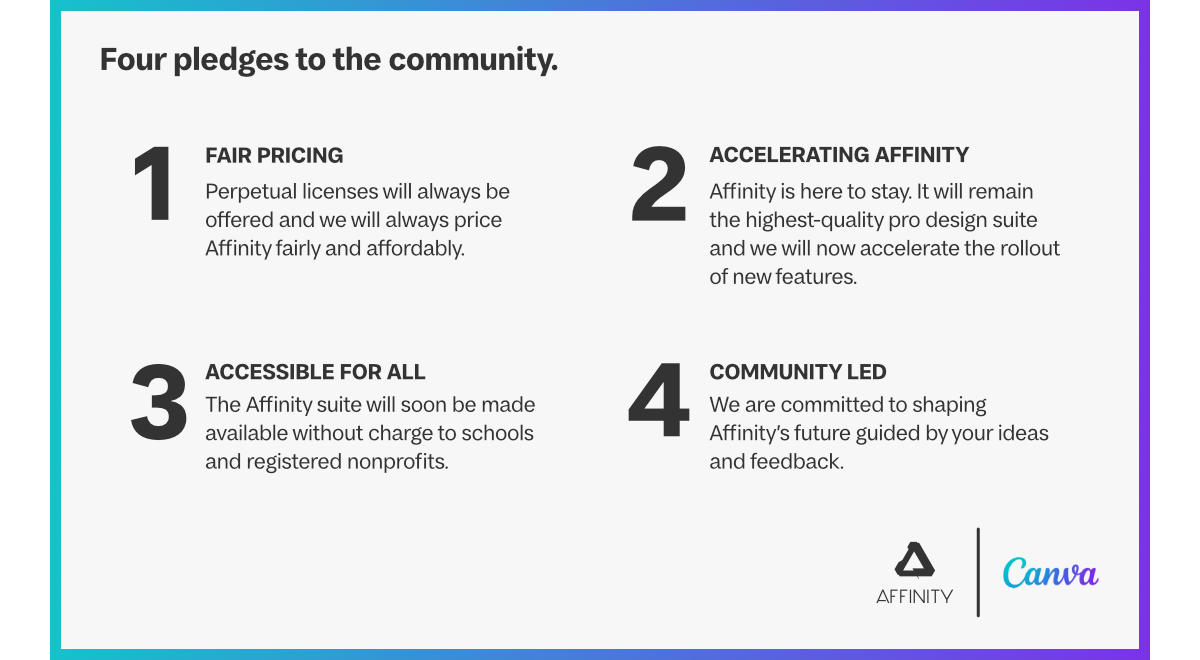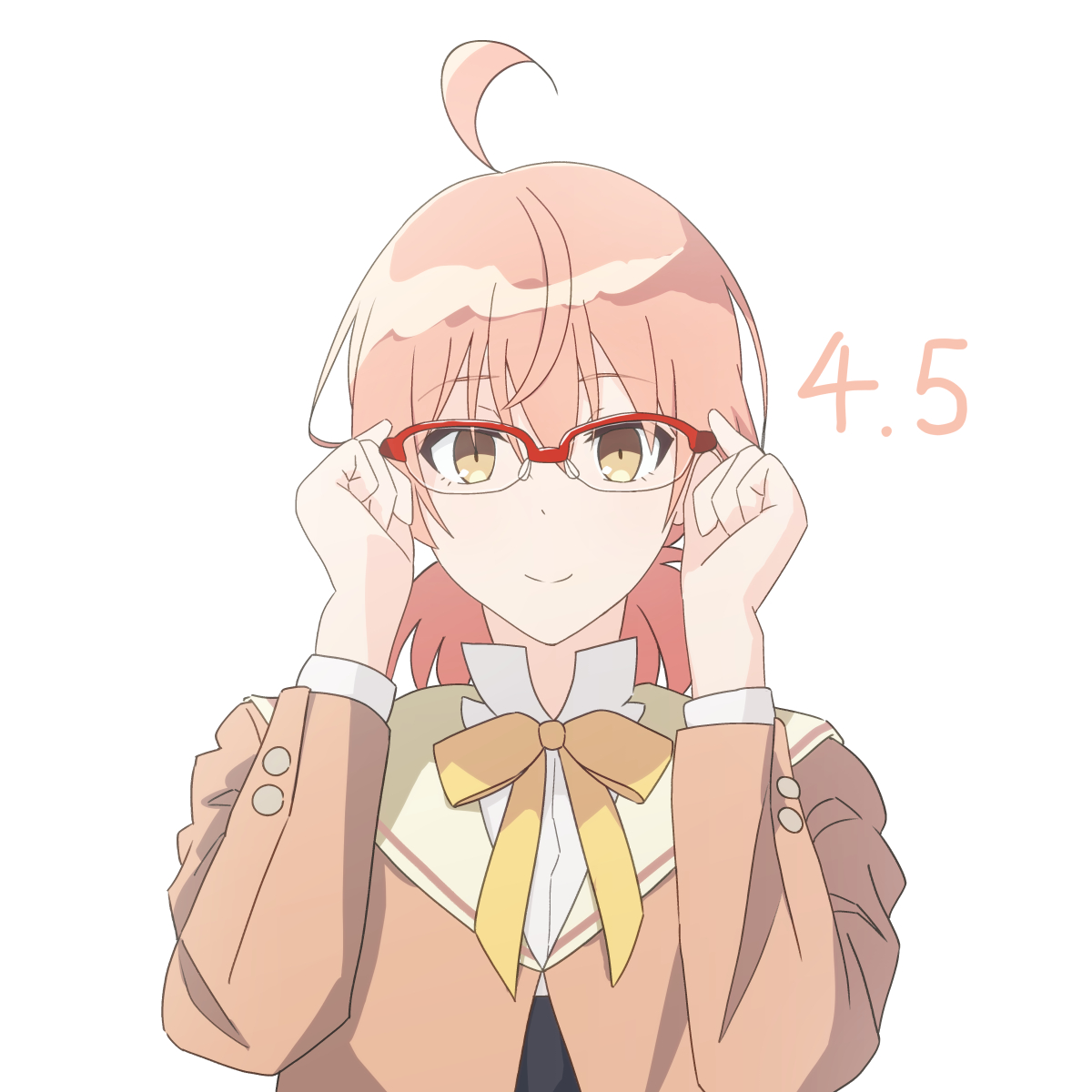That’s why open source rules
I use a lot of open source apps which aren’t as polished, the UIs need work, they’re clunky, and they won’t enshittify.
Yeah and there’s just as many paid for programs with the same issues… What’s your point? Want me to show you some open source programs that are polished? Heard of blender before? That’s not the point I was making anyway… The issue with non foss software is that you have ZERO control over it. Big corporations can decide to drop support at any moment or make a free tier paid.
Allow me to reiterate:
I use a lot of open source apps…and they won’t enshittify.
I love FOSS but GIMP and Inkscape aren’t nearly as usable or feature rich as the Affinity suite, let alone the Adobe suite.
Man i just hate these comments. Imagine you’re gimp / foss developer and you see an uncritical, unactionable, and dumbass comment about how a multimillion dollar company beats your software. Like of course mate Affinity & Adobe developers get money thrown at them, while gimp developers have to stand your ungrateful ass.
‘It doesn’t meet my needs’ seems like light criticism but I understand your point. I’m eternally thankful to devs but at a certain point it either does what you need or it doesn’t.
GIMP is a special case. GIMP is being getting outdeveloped by Krita these days. E.g.:
https://gitlab.gnome.org/GNOME/gimp/-/issues/9284
Or compare with:
https://www.phoronix.com/news/Krita-2024-GPUs-AI
GIMP had its share of self inflicted wounds starting with a toxic mailing list that drove away people from professional VFX and surrounding FilmGimp/CinePaint. When the GIMP people subsequently took over the GEGL development from Rhythm & Hues, it took literally 15 years until it barely worked.
Now we are past the era of simple GPU processing into diffusion models/“generative AI” and GIMP is barely keeping up with simple GPU processing (like resizing, see above).
From someone with a passing interest, Krita seems on a similar trajectory to Blender - gathering momentum and going from strength to strength, whereas Gimp seems rather stuck.
From what I understand, GIMP fell behind because it refused corporate donations while Krita accepted them. This lead to GIMP reducing in scope as the 1-3 part-time developers (at least when I last really looked into it) realised they’d never catch up, leading to people donating less as they weren’t satisfied with GIMP’s simultaneous underpromising and underdelivering. Meanwhile Krita managed to receive enough money to hire a team of full time developers for several years, leading to better software, to more donations. It’s like the poverty trap, but with software.
I just installed gimpshop the other day on a whim and immediately I could work at 90% capacity just based 20+ years of Photoshop muscle memory. Gimp never lasted more than a day with me the dozen or so times I’ve tried it before.
There are ways to make it work, and the tooling out there is getting better every day.
Looks like it’s last official version was released in 2007. Are you using a version from gimpshop.com with added adware/spyware? The wiki for gimpshop is pretty eye-opening…
I originally created Gimpshop, but I’m not the jerk who owns that domain and added adware & spyware to the source. Sorry about that. I hate that this guy is out there making my fun little project into an abomination.
I had no clue about this. Thanks for the heads up. Not sure which one I installed but it’s on my test machine and I can check tomorrow
Y’all gimp developers need to grow a pair
License means you paid us for something we’ll let you use until we don’t feel like it anymore.
For Context here is one Email I got from Affinity yesterday:
To our amazing Affinity community,
Today marks a momentous new chapter in our journey together.
I am thrilled to announce that Affinity is joining the Canva family.
This is a moment of great excitement, anticipation, and profound gratitude for all of you who have been part of our story so far.
We know that those of you who’ve put your faith in Affinity, some since we launched our very first Mac app, will have questions about what this means for the future of our products. Since the inception of Affinity, our mission has been to empower creatives with tools that unleash their full potential, fostering a community where innovation and artistry flourish. We’ve worked tirelessly to challenge the status quo, delivering professional-grade creative software that is both accessible and affordable.
None of that changes today.
In Canva, we’ve found a kindred spirit who can help us take Affinity to new levels. Their extra resources will mean we can deliver much more, much faster. Beyond that, we can forge new horizons for Affinity products, opening up a world of possibilities that would never previously have been achievable.
Canva’s revolutionary approach to design democratisation and commitment to empowering everyone to create aligns perfectly with our core values and vision. This union is a testament to what can be achieved when two companies that share a common goal of making design accessible and enjoyable for everyone come together.
I want to express my deepest gratitude to our incredible Affinity team. Your passion, dedication, and relentless pursuit of excellence have been the driving force behind our success so far, and I can’t wait to continue this journey with you all.
To our loyal users and the creative community, your support and feedback have been invaluable, we hope this this FAQ will answer many of your questions.
You’ve inspired us to push boundaries and continuously improve, and we’re excited to embark on this new chapter together.
You helped us start a movement.
Today, that movement becomes a revolution.
With heartfelt thanks, Ash Hewson - Affinity CEO
Ashley Hewson
CEO
Another Email I got today:
The Affinity and Canva Pledge
By the Affinity and Canva Teams
As we step into our shared future, we are committing to four pledges that we’re excited to share with the current and future Affinity community.

Earlier this week we shared the news that Affinity had been acquired by Canva. As the dust settles on the announcement, we wanted to say more about our future and our commitment to the Affinity community.
Since our inception, both of our companies have shared the same mission and vision. We were both founded with the belief that design shouldn’t be limited to those who can afford complex software. Our goal has been to make the highest quality design tools available to the largest number of people with fair, transparent and affordable pricing at our core. By joining forces, we’re looking forward to accelerating this shared vision.
Above all, together, we’re committed to continuing and amplifying Affinity’s position as the highest-quality professional-grade design suite on the market, while continuing to empower millions of designers to unlock their creativity and achieve their goals.
1. We are committed to fair, transparent and affordable pricing, including the perpetual licenses that have made Affinity special.
We share a commitment to making design fairer and more accessible. For Canva, this has meant making our core product available for free to millions of people across the globe, and for Affinity, this has meant a fairly priced perpetual license model. We know this model has been a key part of the Affinity offering and we are committed to continue to offer perpetual licenses in the future.
If we do offer a subscription, it will only ever be as an option alongside the perpetual model, for those who prefer it. This fits with enabling Canva users to start adopting Affinity. It could also allow us to offer Affinity users a way to scale their workflows using Canva as a platform to share and collaborate on their Affinity assets, if they choose to.
2. We will double down on expanding Affinity’s products through continued investment in Affinity as a standalone product suite.
We believe Affinity is the highest-quality professional-grade design suite on the market. It’s non-destructive, super fast, and easy to use. As such, we want to reassure you that it isn’t going anywhere.
In fact, we’re committed to using our shared resources to continue expanding Affinity’s products through further investment in Affinity as a standalone product suite. We’re looking forward to accelerating the rollout of highly requested features such as variable font support, blend and width tools, auto object selection, multi-page spreads, ePub export and much more.
These additions will further cement Affinity as the best advanced design suite on the market and will be released over the coming year as free updates to V2.
3. We will provide Affinity free for schools & NFPs.
Canva, which has pledged 30% of its value as a company towards doing good in the world through its two-step plan, offers premium plans at no cost to schools and NFPs all over the world. More than 60 million students and teachers, plus 600,000 charities and registered nonprofits, benefit from this each month.
We’re excited to extend this programme to include free access for schools and nonprofits to Designer, Photo and Publisher. These professional-grade tools will add enormous value to this free offering, helping millions of students to master the craft of design, and empowering mission driven organisations to amplify their voices and maximize their impact.
We’ll share more details on this in the coming months, including what it means for our education and NFP customers that already use Affinity.
4. We are committed to listening and being led by the design community at every step in this journey.
Affinity and Canva were both founded on the basis that their respective communities – of expert and non-expert designers – deserved better. The tools available were overly complex, overly priced, or both. We know designers deserve better. They deserve the highest quality tools to serve their needs and they deserve to be treated fairly.
We also believe the design community also knows best what it needs. As such, we are committed to shaping our products based on your ideas, your feedback and your needs. To kick things off, we’d love to learn more about what you’d like to see as we embark on this next chapter of our journey. What would you like to see in Affinity? What features have you been dreaming of? What would you love to achieve? We’d love to hear from you here.
Thank you to everyone who has been an integral part of the journey so far. We’re excited for the future and can’t wait to see what we can build together.
With gratitude and excitement, The Affinity and Canva Teams
All links and images are from the email and not mine. I also replicated their email formatting in Markdown to make it easier to read on Lemmy.
Buying a lifetime license, also known as… buying.
Products aren’t services.
The service is the developers releasing bug fixes and features that should have been there to begin with.
As a programmer, I cannot throw that stone. Software is hard.
But leaving software alone is the easiest thing in the world.
I learned my lesson about ‘lifetime’ updates with a Tom Tom GPS unit, from the late '90s, maybe early 2000s. After about 4 or 5 years I couldn’t install the latest map updates, so I contacted CS. They said, “Oh yeah, lifetime means the time of the expected life of the unit, which is 4.5 years. We don’t support that model anymore. Any other questions?”
I’ve bought VPN lifetime several times, 2 of them have disappeared, 2 are still running. On the other hand, just think about it from the company point of view, lifetime support is not a sustainable business model, so it necessarily must be a scam.
If my Windscribe Lifetime VPN eventually disappears, I’ll of course be pretty upset. However, for the 35 bucks I paid for it in 2016 I feel like I’ve received an amazing value.
Nah not necessarily. It can be a great way to get money early on without venture capital.
Yeah, you will have to provide the service to them forever but they are usually a small bunch so they aren’t a big deal if you manage to get big later on.
I suspect most companies that offer lifetime even when they are big have statistics showing that they lose little money or none because the high price means that the average consumer won’t use the service for the required amount of years to break even.
Yeah, it’s kind of like crowd-funding. The early customers get a great deal, but also have the risk of the company going out of business.
I bought one on sale for 20 bucks like 9 years ago. It’s still running, though it’s not a particularly great VPN. Performance is meh, the clients are really basic. I still use it because after this long it’s basically free
To the people in this thread saying “don’t buy lifetime”, how is that any different than a perpetual license? Your alternative is subscription based… I’d definitely prefer perpetual to subscription.
Software companies don’t want you to know this, but the open-source licenses on the internet are free. You can just take them home. I have 458 apps.
Rookie numbers, I have 307336924 cloned repos
There is always another way
🏴☠️
But they were all decieved, for another license was made. Forged in secret.
Yeah but for software you want it to work and sometimes need help, when you steal that software you are often on your own. In open source, there is nearly always an open alternative that comes with community support!
I mean, the only time I’ve used official support for some software was when I was having a license issue with Windows. Everything else has been solvable using the open internet.
The reason why I don’t pirate software anymore is you have no idea if the people who cracked it added malware or not and it’s, IMO, a perfect way to deliver malware.
I abuse free trial and surprisingly it works really well
Fair point, that is my fear too. I run Ubuntu so nearly all my software is open source already and for the slim number of tools that aren’t in just pay for them because they are good enough to warrant it imo.
Most of the time, the tools I use to pirate are open source themselves so that isn’t really a problem for me.
I don’t mean the distribution tools like bittorrent etc have malware. If you pirate games or software, you run binaries provided by the people that cracked it, which don’t tend to be open source. At least they weren’t back when I was consuming them.
I mean I used tools like UltimMC to get around having to make a minecraft account. UltimMC doesn’t provide the games themselves, that is downloaded from mojang’s website, UltimMC simply provides a way to get around basic DRM.
Fuck
even if they keep lifetime licenses for now, it’s blatantly obvious how Canva plans to use Embrace, Extend, Extinguish to move people to a subscription service for newer releases.
If adobe can do it with Photoshop et al. without losing its brand reputation, then Affinity will follow suit in due course.
Yep, they’ll probably stop updating the Affinity product and launch a new product line with annual subscriptions. Probably cloud-based.
Man I JUST got affinity photo for RAW work cause its a good workflow and way better than lightroom and now I find out about this? Ffs cant have shit on earth
Try darktable
Well on the upside you will keep your access forever and get updates for free for some time still (until v3 comes out).
If you think the workflow is good now, then it shouldn’t matter much because you will keep that workflow.
Plex lifetime is the gift that keeps on giving. Same with some indexers like nzbgeek.
Plex turned shit years ago.
Switched to Jellyfin and never looked back.
Even rubbed it in my just deleting my Plex accounts with the lifetime pass on it, means nothing to me now.
Ah so this is how I find out. Sweet.
FUCK
Subscriptions, here we come! You can’t trust any commercial software company.
I remember Pocket Casts tried to take away lifetime purchases until people complained about it and they went ‘fuck it’ and gave people memberships that lasted 100 years or something. They did it before they had time to rebrand it as a ‘Lifetime Member’ in the GUI so good on them for fixing it so fast I guess.
I love it as an app but I’m not sure what it’s like for new users that can’t get lifetime memberships.
I bought pocket casts for like $4 a very long time ago. I’m not sure what you’re talking about, and the app says I have a free account. What is the difference in buying the app and subscribing to it?
I only came along after Google podcasts announced that it was sunsetting, so I don’t know what the lifetime membership entailed. But I have no need for any of the paid features they offer, so I’m happy to remain a free member. I don’t really understand why I would need cloud storage… from my podcast app… and on pc, I just run the Pocket Cast app in an Android emulator since for some reason you can’t use a web browser without a subscription. Completely mystifying decision, but I’m not paying $4 a month for it.


I use cloud storage for audiobooks. It syncs my progress across devices. That’s the reason I bought the app (and got lifetime subscription later).
Oh very cool - that’s a very good use case that I hadn’t considered!
What Android emulator are you using?
I remember I tried one for macOS before but I wasn’t happy with the performance, I did try it for the Tivimate I think, but it was choppy and not worth to use, I was gonna go back to experiment about this it would be because of Pocket Casts for sure.
I just loaded up Android Studio, which has it’s own emulation layer. I’ve tried Bluestacks in the past and had trouble with it - figured that Google’s own environment would be the best option.
Hmm, I see, I’m gonna look into this surely!
Canva’s UI is somehow more fiddly than Word for making edits, but they’ve always seemed like a pretty decent company to me.
…of course that only holds true until it doesn’t - I’m looking at you, Google.












